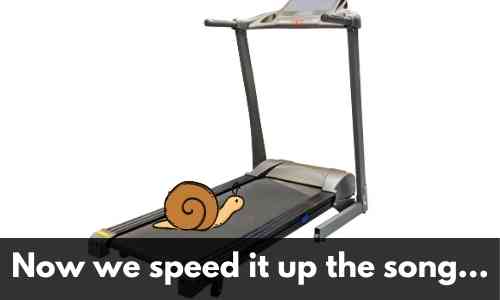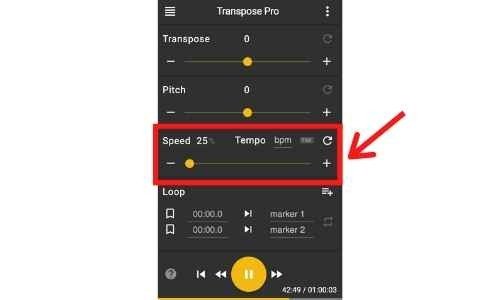Vibrato is one of those singing skills that just sound plain awesome.
A clear and powerful vibrato is what every singer wants to have so you can emphasize on certain notes and add emotion to your song.
That’s why in this guide I am going to show you how to sing vibrato and get started even if you are a complete beginner.
Plus, I also show a proven system which advanced singers can also use to help strengthen their vibrato and pitch accuracy across their entire range.
So let’s get started.
______
Is Vibrato Natural Or Learned?
Vibrato is both natural and learned.
There’s always those exceptional few singers who seem to be already born with vibrato, but anyone can learn vibrato if you’re willing to put in the time and effort.
But before you can work on vibrato, you must be able to be pitch accurate on a note first.
This is because if your voice is already shaky on a note before you attempt vibrato, it’s just going to sound like you have no control over your voice.
Which means that it’s just not going to sound pleasant.
That’s why the prerequisites to learn vibrato is:
- Being able to sing just one note on pitch…
- And having the patience and consistency to practice every day.
If you can do both of this, then you can continue on with this guide.
So what is vibrato?
Vibrato is a steady oscillation over one note.
In plain English, it just means you are evenly bouncing up and down on one note.
Here’s a quick test to see if you can do vibrato:
- Stand up straight and place your hands in a fist-shaped on your stomach.
- Sing a note with the words “ooo” and softly “punch” your stomach inwards while you are singing the note.
If you did it correctly, you will notice that your voice was “bouncing” as you punched your gut.
The reason this is important for a beginner to do is because it shows you don’t need to shake your head or jaw to make the vibrato sound.
Rather, you can feel that it comes from your diaphragm area to control that vibrato.
This is the feeling that you want to have when you are developing your vibrato (minus the punching…)
Plus, once you develop your voice, having vibrato can enhance your singing by adding more emotion, more intensity, and just having more mastery over your voice.
So let’s get started.
______
1. Find A Song With Vibrato That You Want To Imitate

I’m pretty sure the reason that you want to learn how to sing vibrato is because:
- It sounds cool…
- You want to sound cool like your favorite artist.
So pick your favorite song that has vibrato in it.
When you’re picking a song, make sure that the voice is within your vocal range so that you don’t have to strain to sing the higher notes yet.
So for this example I am going to choose “Can’t Help Falling In Love With You” by Elvis Presley since he uses a lot of vibrato in this song (And I’m a big Elvis fan…)
If you listen at 0:07 at the first words “Wise Men Say” then you are going to notice that he does a lot of vibrato…
And what better way to learn vibrato than to copy a legendary singer who’s known for his vibrato!
And here’s a common misconception: You can learn how to do vibrato even if you can’t wobble your voice yet.
Developing the speed of the vibrato is something that you need to practice consistently if you want to sound like a professional singer.
So as long as you use the proper technique with the right system, you will accumulate the speed of your vibrato to its original speed.
______
2. Find The Notes Of The Song And Sing On Pitch

The easiest way to learn how to sing on pitch is to first know the notes of the song that you are trying to sing in.
Here’s a simple way to find the music notes for your song: Go to Music Notes and type in your favorite song like below…

Make sure that the scoring is designed for singers.
And once you click on the link, buy the music sheet and Voila!
You now know what the notes of the song are.
So for our first example we want to sing the words “Wise men say” on pitch with vibrato so the notes we have to hit are below…

And in the key of D major the notes that we have to hit to stay on pitch is:
- D3 (Wise)
- A3 (Men)
- D3 (Say)
Now that we know what notes we have to hit, we have to make sure that our voice is hitting those notes.
Now, if you ears aren’t trained then I recommend using a pitch finder tool like this one just to make sure that you’re hitting the notes properly like below…

As you can see, I’m slightly flat when I am singing the D3 note which helps me know I need to sing a little higher.
And when you are hitting the notes and staying on pitch, make sure you are using proper technique to support your voice.
Otherwise, you’re voice can strain and it can cause problems for you in the future.
But if you can stay on pitch, then your vibrato is going to sound great.
End of story.
______
3. Slow Down The Song And Count Each Bounce

Once you find the notes of the song, the next step in learning how to sing vibrato is by slowing down the song and counting each bounce.
When we are first learning vibrato, we want to mimic exactly what the singer is doing.
This is because:
- You will learn how to create the effects of your favorite singer
- You will also copy his tone and dynamics without even realizing it…
And the way to count each bounce is to make the song slow enough that you can hear how many bounces there are in a word.
So let’s continue with our Elvis Presley example.
In the first line he says “Wise Men Say.”
What I will do is slow it down to 0.25 and count each bounce and here’s what I noticed:
- Wise (8 bounces)
- Men (10 bounces)
- Say (8 bounces)
It’s okay if you’re off by a couple bounces because you are also doing ear training as well when you do this singing exercise.
When you continue to listen to it, you will notice if it’s slightly different and adjust to make sure that you are singing each bounce correctly.
Now you want to make the same sounds at 0.25 as he’s doing the vibrato.
Notice the nuances in the vibrato and copy the power and tonality of the vibrato.
And once you get used to it, slowly speed it up.
It’s like learning the piano: you learn the notes slowly at first and then once you become better, you get faster.
And the most important thing is to make sure that you are staying on pitch the whole time.
______
4. Gradually Increase The Speed Of The Vibrato

Once you are getting comfortable doing vibrato at a slow speed, the next step in learning how to sing vibrato is to slowly increase the speed.
The goal is to sing the vibrato at original speed.
So once you get a couple of good repetitions at 0.25 speed, then you want to increase it by 3-5% and see how that feels.
Here’s how you slowly increase the speed: Go to the Transpose chrome extension and adjust the speed here below…

Focus on the quality of the vibrato rather than the quantity.
This means that you want to exaggerate the bounciness of the vibrato when you are developing it.
A lot of beginners (including me) are fixated on the speed of the vibrato, that when we can sing at “original speed” it just doesn’t sound good.
So watch out for that.
And when you reach a speed that you can’t physically do yet, then bump it up back to original speed and attempt it.
Then go back to your “limit” speed.
When you do this, you are tricking your brain and making your “limit speed” sound a lot easier.
Just a simple trick to also help you increase the speed of your vibrato.
______
5. Focus On The Tonality Of The Vibrato

Now that you are adding speed to your vibrato, it’s time to focus on the tonality of the vibrato.
This is something that you can work towards as a beginner so you can develop it and use it for other songs.
So let’s go back to the song “Can’t Help Falling In Love” by Elvis.
In his first line “Wise men say,” you will notice that when he says “say” that his vibrato fades out, and he becomes a little breathier.
I’m pretty sure he did this as a stylistic choice to add more emotion into this song since it is a love song.
And we want to copy his technical skills so that we have more techniques we can use for the future.
Anyway, here’s how to change the tonality of your vibrato:
- Sing the words “say” with a breathy tone…
- Now try singing those words while lowering your intensity when you get to “say…” without being breathy…
- Now combine them both…
I make it sound simple, but this is more towards advanced singers who have more control over their voice.
Otherwise, it can take months before you develop the stability in your voice to do that.
But something to keep in mind when you are copying someone else’s vibrato is to pay attention to:
- How many bounces do they do?
- What type of tone is the vibrato?
- How loud or soft is the vibrato?
Asking and noticing these little things will help improve your ear and ability to do vibrato.
______
6. Work Vibrato Across Your Entire Range

What we have been focusing on is working vibrato mainly in our comfortable range and getting to its original speed.
Now what we want to learn is singing vibrato across your entire range.
You are going to notice that if you haven’t practiced vibrato in your lower or upper range, then it’s going to sound weak.
And your voice won’t be able to match up the speed compared to your comfortable range.
This is because when you do vibrato, you are oscillating between the note and slightly above or below it.
For example, if we are singing the highest note in our range (C4) then that means to do vibrato, we have to go slightly higher to create that bounciness.
And it’s the same way to build your vibrato in your upper range:
- Find the note that you want to strengthen…
- Start the speed at 0.25…
- And slowly increase the speed until you reach your limit or your voice gets tired.
If you can do vibrato slowly in your upper range, that means you have the control to slowly increase the speed.
It’s going to take longer since your voice will naturally get tired at your higher range, but slowly doing quality reps will make you do vibrato in your upper range.
______
7. Add Volume To Your Vibrato
Now that you have worked your vibrato, it’s time to learn how to add volume to it.
The way you work on vibrato is to first focus on a note to sing whether it’s from a song or on a piano.
For this example we are going to choose Middle C (C3).
Now what you want to do is you want to make sure that you can hold this pitch steadily for 10 seconds.
This is because we need to be pitch accurate if we want our voice to sound good when we increase the volume.
Once you can do that, it’s time to do the same thing but increase the volume without changing the pitch.
Slowly add a bit more power from your diaphragm rather than your throat.
And the tricky part is making sure that you stay on pitch while you are controlling the volume.
And do the same thing when you are decreasing the volume.
Now, you can slowly start adding vibrato at the end once you are able to stabilize the pitch while controlling the volume.
It’s important to work one thing at a time because we are controlling:
- Singing on pitch
- Controlling our volume
- Adding vibrato
All at the same time.
And it’s better to focus on one element at a time before we add another one.
This also how you build coordination and control for your vocal cords.
______
8. Add Vibrato To Your Falsetto
Now it’s time to learn how to sing vibrato in your falsetto.
The way you do this is exactly the same with your chest voice (I think you are seeing the picture here…)
I recommend doing this once you have the knack of vibrato in your chest voice because it will make learning it in falsetto exponentially easier.
It’s also going to feel slightly different if you haven’t trained with your falsetto since you haven’t used this vocal register.
It’s much more important to focus that you are using your diaphragm to support the vibrato rather than your throat, since using falsetto uses more air.
So here’s the steps to learning how to sing vibrato in falsetto:
- Start at 0.25 speed
- Listen to the song and replicate it
- Once you get used to it slowly start increasing the speed.
It can take many months for you to be able to sing at original vibrato speed.
Remember, I did say that it was possible if you put it in the time and effort.
This is because it takes time for your voice to develop since it’s a muscle.
______
Frequently Asked Questions
Who are famous male vibrato singers?
If you don’t know any singers who use vibrato, you can use these famous people as inspiration and learn how they do their own vibrato.
Here are some famous male vibrato singers:
- Elvis Presley
- Ed Sheeran
- Michael Buble
- Frank Sinatra
And here are some female famous vibrato singers:
- Celine Dion
- Whitney Houston
- Mariah Carey
- Leona Lewis
Is Vibrato Singing Bad?
Vibrato singing is not bad for you as it is a stylistic choice.
However, it’s best to use vibrato sparingly to emphasize some words.
For example, if you add vibrato on every word of the song it’s going to take away from the melody and the vibrato is just going to sound annoying.
Whereas if you use it at certain notes or at the end of the chorus line, it packs a bigger punch.
But vibrato does not hurt your throat if you do it correctly and can enhance your singing as well.
How long does it take to learn vibrato?
It depends when you say learn vibrato.
If you are a complete beginner and you want to have a “working” vibrato (so this means it’s clear and bouncy vibrato even if it’s slow) you can get it with a couple of months of training.
However, if you’re talking about vibrato across your entire range with complete control of your vocal dynamics, it can take years for you to master.
It depends on how far you want to go with your voice.
______
Conclusion
Now that was a lot to take in for vibrato but I have given you a complete guide in how to strengthen your vibrato as a singer.
I showed you step by step on how to stay on pitch and increase your vibrato speed so that it reaches the original speed.
And once you are able to add vibrato to your voice, you can slowly start experimenting with distorting your voice and mixing it with vocal runs to enhance your singing.
Since in the end, singing is all about having fun and expressing yourself whether it’s by yourself or to an audience.
Let me know if you have any questions with improving your vibrato below!







